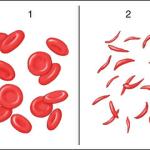There are any number of algorithmic risk calculators that combine a host of measurables to predict our risk of dying from “all-causes” to more specific cardiovascular deaths.
Disease
I have a long-standing interest in sickle cell anemia, a genetic abnormality that is the scourge of approximately 100,000 Americans, primarily Black, who are afflicted with it.
A Case in Point
I described two approaches: (1) combining surface proteins from different coronaviruses on a scaffold, and (2) focusing on conserved regions of the virus that tend not to mutate.
“A complex system is made up of very large numbers of interacting components, asymmetrically organized. Some such systems operate somewhere between order and disorder—“on the edge of chaos,” ….
Two friends independently emailed me a recent
A Confusion of Terms
Discussing stress and anxiety invites confusion, as these diagnostic terms are often interchanged, and their causes poorly identified.
Fifteen hundred adults were surveyed by the Annenberg Public Policy Center (APPC) of the University of Pennsylvania in early October. The results are breathtaking, and not in a good way.
Sickle cell disease, SCD, is a genetic mutation in hemoglobin that alters the shape of blood cells, making them sickle-shaped rather than round.
What Doesn’t Kill Us, Makes Us Stronger? Maybe not.











